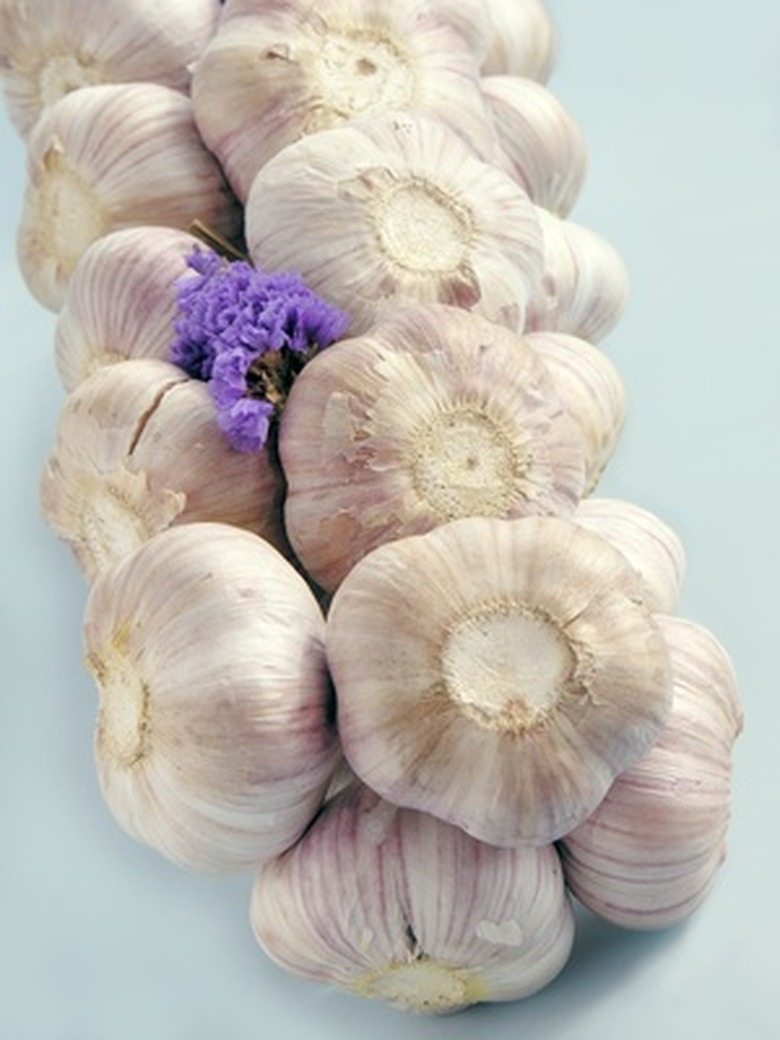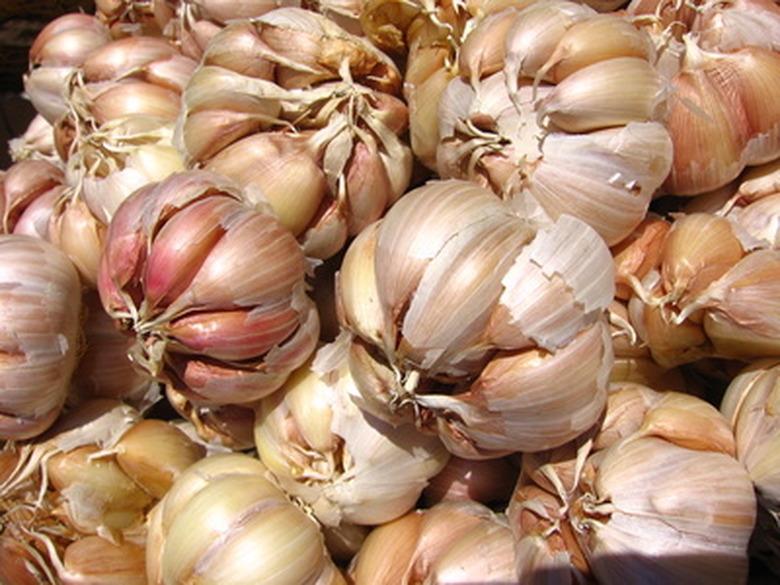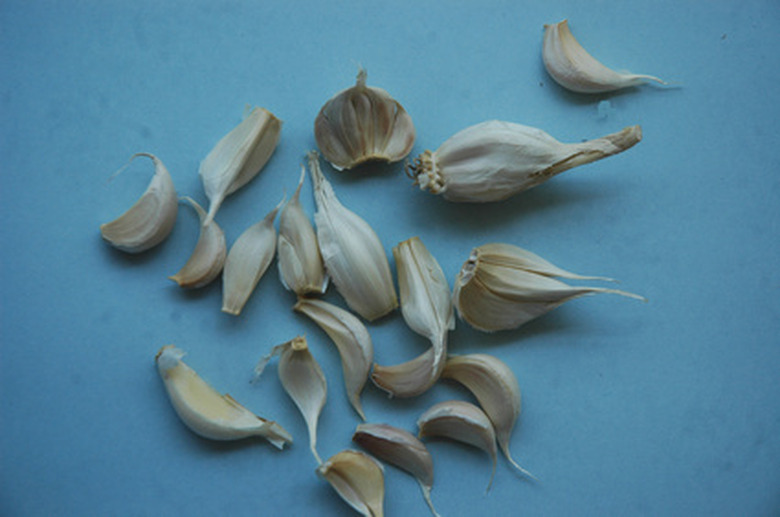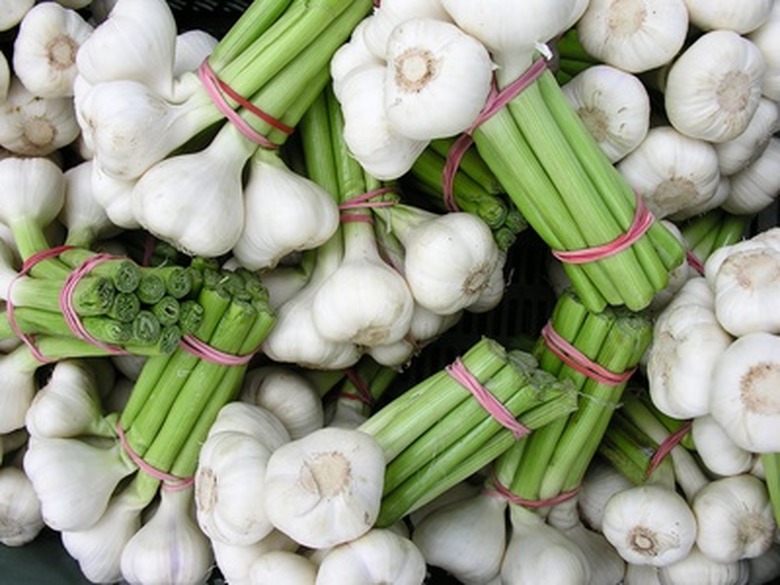Life Cycle Of A Garlic Plant
Garlic is relatively easy to grow in the garden, though its need for cooler temperatures makes its growing season a little different than most vegetables. Its strong taste and smell make it a wonderful addition to any kitchen garden. Its bulbs make decorative ropes, braided and hung for easy access. Understanding its life cycle will help you decide if growing garlic is right for you.
Garlic Description
Garlic starts or ends, depending on your perspective, as a bulb divided into sections called cloves. The bulb is layered in skins, much like an onion, with dry, papery outer layers and thicker, moist inner layers. Each clove also has layers of skin. Once you peel away the out layers of the bulb, it is easier to see the individual cloves and their skins.
- Garlic is relatively easy to grow in the garden, though its need for cooler temperatures makes its growing season a little different than most vegetables.
- The bulb is layered in skins, much like an onion, with dry, papery outer layers and thicker, moist inner layers.
Planting Garlic
Garlic is best planted in the fall while temperatures are slightly cooler but before the ground is frozen. The bulb is divided into individual cloves for the best results. Each clove is planted about 8 inches apart in the soil and about 2 inches deep with the pointed end up.
Growing
The clove will begin to send out roots and feed during the fall. It will lie dormant during the winter and resume growth in the spring. The clove, now developing a bulb of its own, will actually rise up through the soil, leaving its roots lower enough to reach water but keeping the bulb out of the water so it will not rot.
Harvest
A long, cool spring is best for garlic as heat causes garlic to bolt, which means it grows too quickly and takes on a bitter taste. Size is not necessarily a determining factor in harvesting garlic. Depending on the variety of garlic planted, the bulbs can range in size from small to large by mid-May.
- Garlic is best planted in the fall while temperatures are slightly cooler but before the ground is frozen.
- The clove, now developing a bulb of its own, will actually rise up through the soil, leaving its roots lower enough to reach water but keeping the bulb out of the water so it will not rot.
Also, the climate and geography of the garden has some bearing on harvest as the warmer spring temperatures arrive in the south first and creep northward, meaning northern gardeners may not harvest until July. The trick is to watch the leaves. When the outer leaves begin to die back and only about six leaves remain, it is time to harvest the garlic.
Renewal
Once garlic is harvested, it can be used directly or stored with its wrappers or skins intact. Other bulbs can be dried and used for spices. Some are woven into garlic chains or ropes and hung in the kitchen. Others are saved to be used as the seed for next year's crop, broken apart and planted again in the fall.
- Also, the climate and geography of the garden has some bearing on harvest as the warmer spring temperatures arrive in the south first and creep northward, meaning northern gardeners may not harvest until July.
- Other bulbs can be dried and used for spices.



